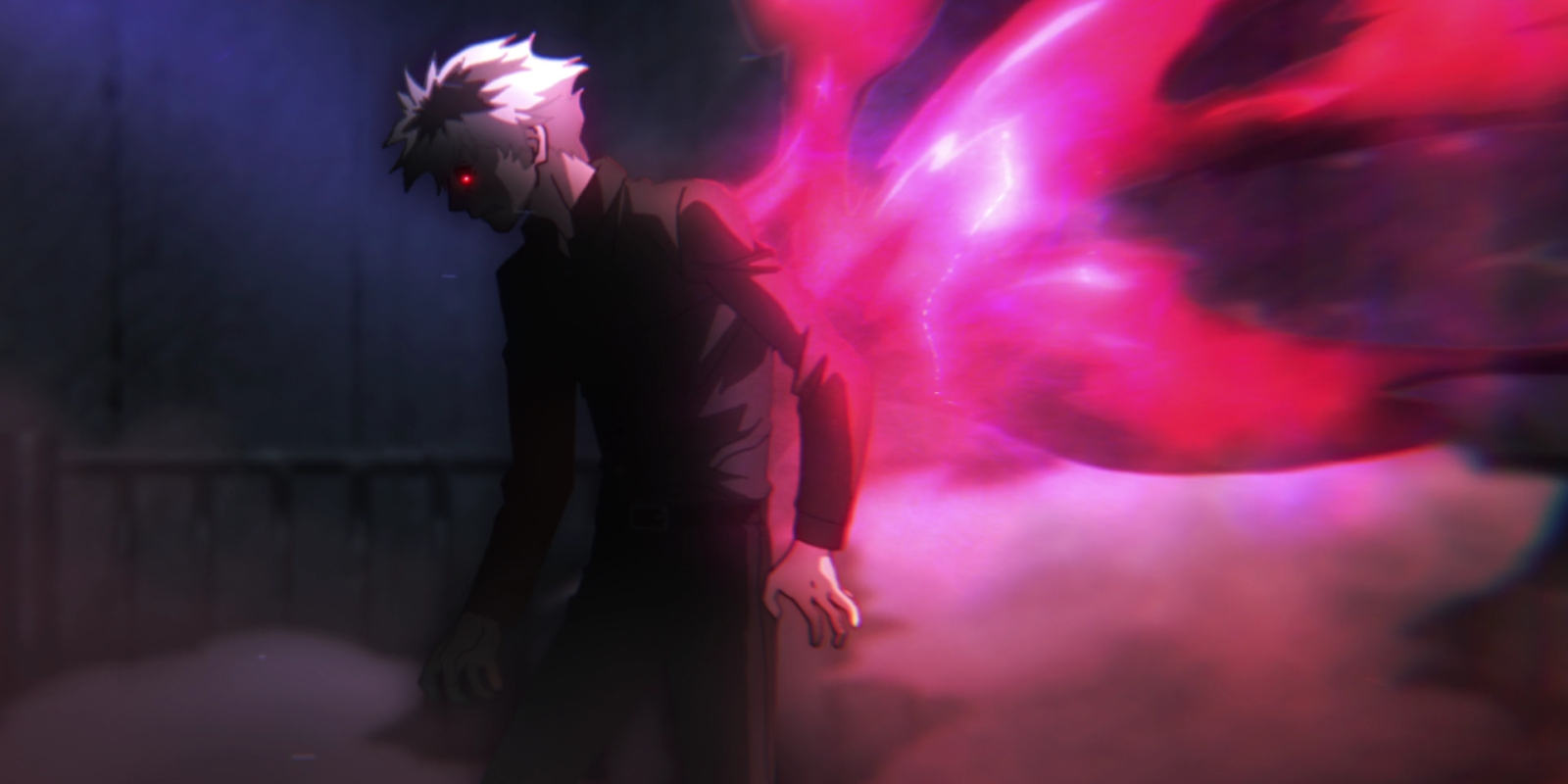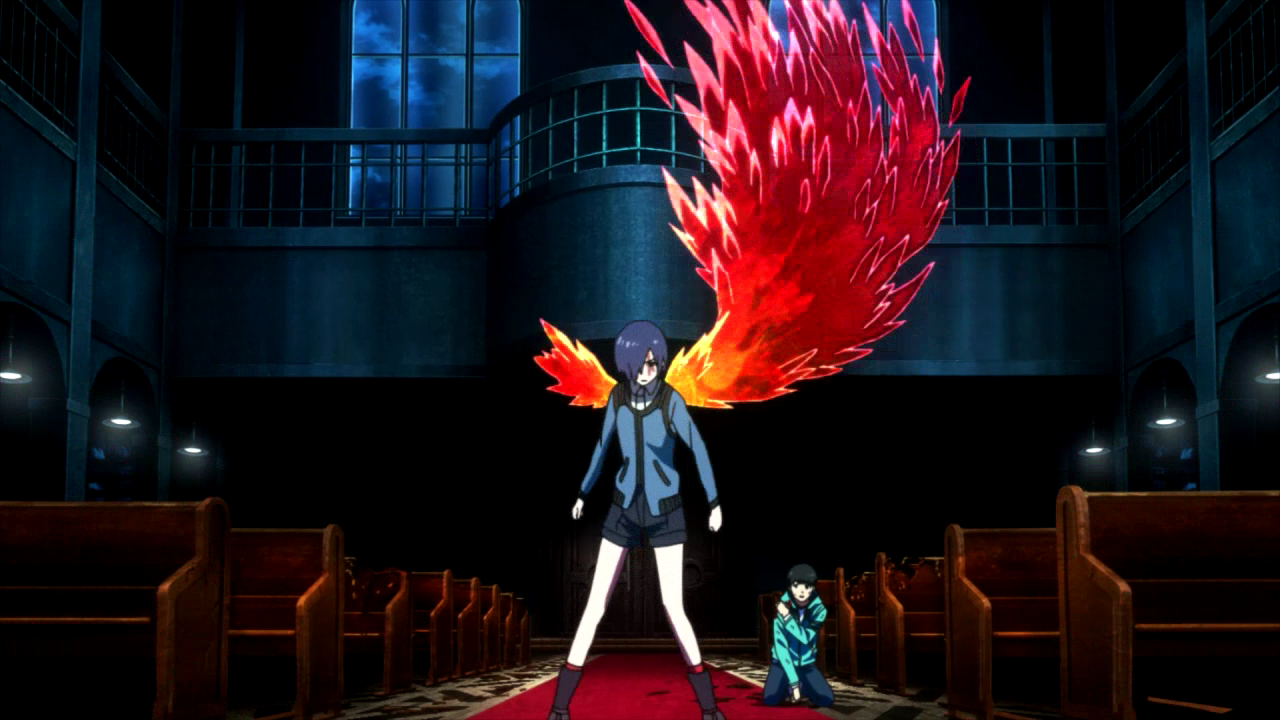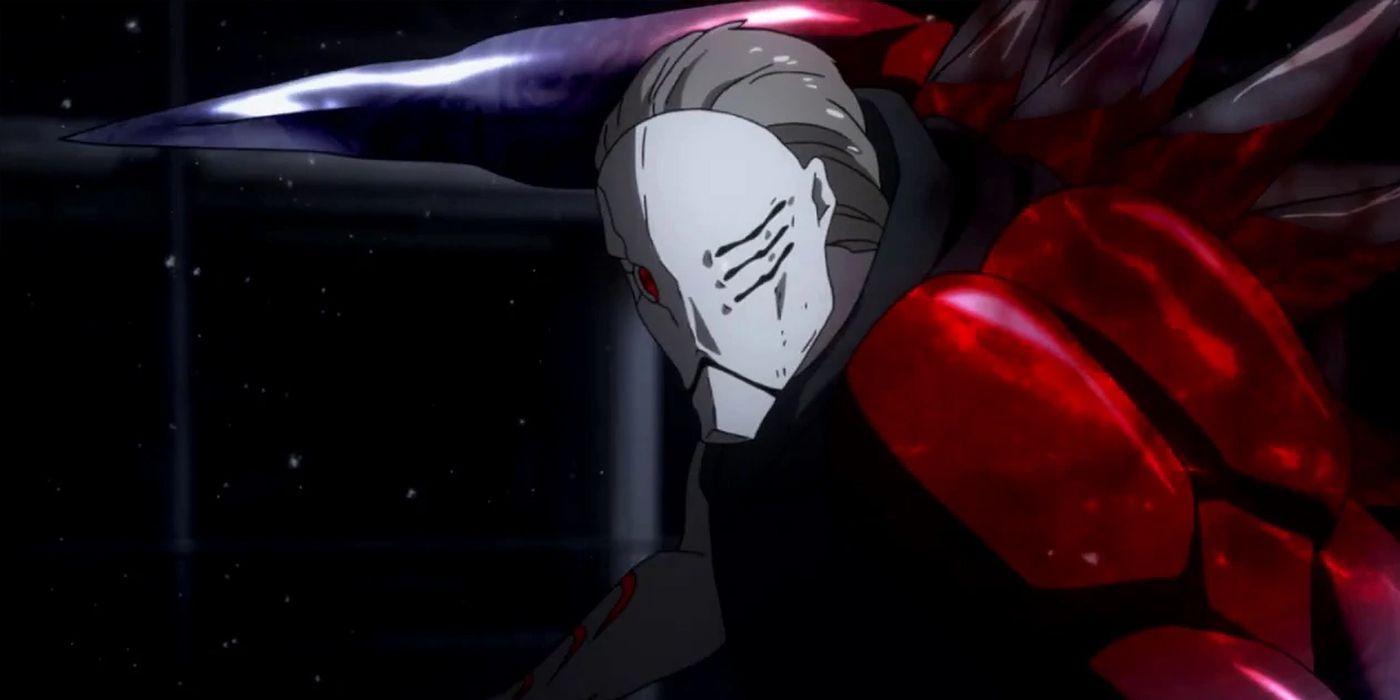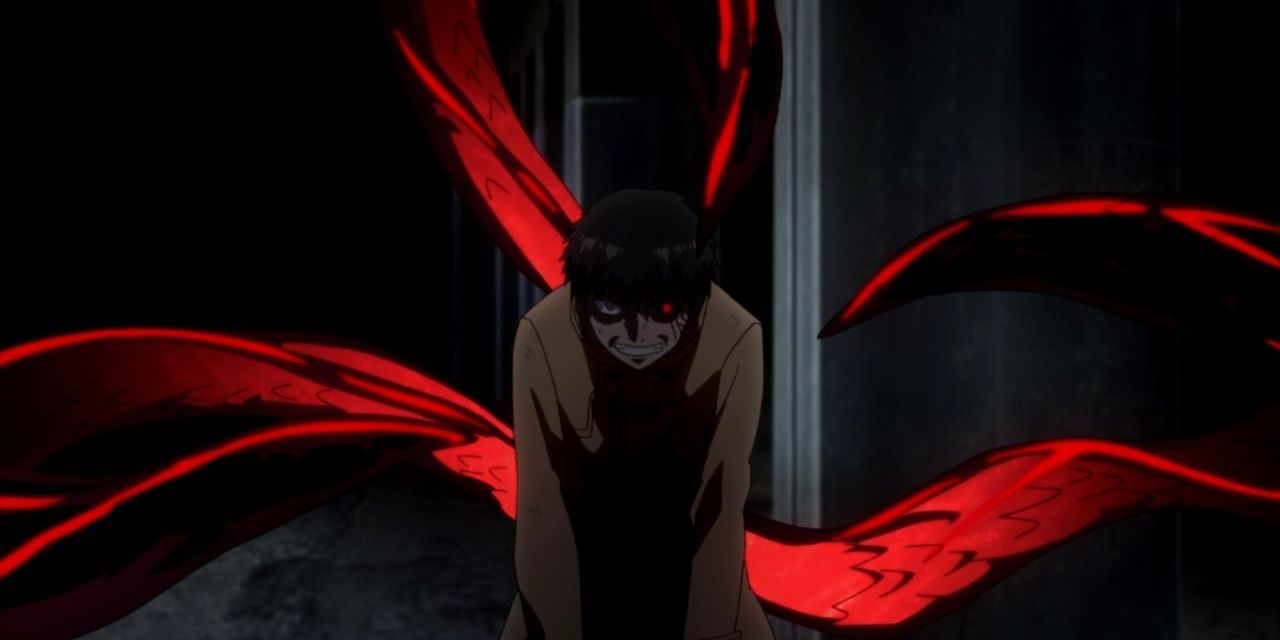In Tokyo Ghoul, flesh-eating, humanoid creatures known as ghouls stalk Japan's capital in search of human meat to feast on. Ghouls are prevalent in other types of supernatural media, but what's especially unique about the ones in Sui Ishida's manga/anime series are the strange structures that extend out of their bodies.
These structures form bioweapons called kagune, which the ghouls use to fight and kill their human prey. Tokyo Ghoul features four main types of kagune, and while they are all weapon-like in nature, each one is different. Here's everything to know about kagune and what they can do.
The Role of Rc Cells In Forming Tokyo Ghoul's Kagune
A kagune is a biological weapon released from the body of a ghoul, which acts both offensively and defensively while fighting opponents. But where does this weapon come from? Every ghoul possesses a sac-like internal organ called kakuhou. The kakuhou stores numerous Red Children cells (Rc cells) inside of it -- similar to how the human stomach stores food before digestion. These Rc cells form the kagune and are responsible for its elastic and liquid-like properties which allow the kagune to swiftly extend to long distances while maintaining its firm and strong muscle-like quality. This contributes to the name "Liquid Muscle." Although humans have a few Rc cells, a ghoul's Rc cell count is 10 to 15 times higher.
Ghouls gather more Rc cells when they devour humans or other ghouls and when this happens, the kagune becomes stronger and larger. When a ghoul has devoured too many ghouls and humans, the ghoul can evolve into a very rare type called a kakuja. After the transformation, the kagune covers their whole body. But if the transformation is incomplete for any reason then the ghoul is called a half kakuja. A human can also evolve into a ghoul if surgery is performed to increase their Rc cell level to the level of a ghoul's, leading to a gradual transformation as seen in series protagonist Ken Kaneki's case.
Humans, in a bid to protect themselves, battle ghouls with artificial bioweapons of their own called quinque. Quinque were created from the kagune of captured ghouls, and are the only effective means of killing a ghoul.
Ghouls Determine the Shape of Their Kagune
A kagune can take on any shape the ghoul depending on the ghoul's mind or desire. The stronger a ghoul's kagune becomes, the more likely they are to win a fight, and ghouls with weakly developed kagune could lose a fight or even die. A ghoul becomes even more dangerous when they become a kakuja; while the chimera of the species, who have hybrid kagune, are stronger than the average ghouls. The One-Eyed Owl, leader of the Aogiri organization, was a kakuja, for instance, which became a very difficult threat to deal with.
Kaneki, meanwhile, always proved to be a difficult ghoul to take on due to his constantly evolving kagune, and he only became even deadlier after becoming a dragon kakuja. This brings us neatly onto the different abilities ghouls can unlock based on the type of kagune they possess.
Understanding Tokyo Ghoul's Different Kagune Types
There are four main types of kagune in the Tokyo Ghoul franchise: Rinkaku, Koukaku, Ukaku and Bikaku. Each kagune grows from a specific point on the body and operates as a weapon. Some are effective for medium to long-ranged attacks, while others are dangerous up close.
The Tentacle-like Rinkaku Forms Sharp Objects for Stabbing
The rinkaku is a tentacle-like kagune that extends from the back of a ghoul. These structures can be used to form a sharp shape to stab opponents with if the user so desires. Kaneki has a rinkaku kagune, which evolved from Rize -- the ghoul he got his powers from. This kagune can form claw-like hands that could be used for nimble climbing. The colour of rinkaki kagune varies depending on the gene-type and Rc cell type of the ghoul.
The Sword-Shaped Koukaku Extends When Attacking
This type of kagune extends from the upper back region of the ghoul to form a sharp, sword-like shape. It is mainly used for attacking as it extends from the shoulder to cloak the arms before further extending into a sword. For this reason, it's also known as the sword kagun, and a high-class one at that with very high attacking capabilities.
Ukaku Form a Wing-like Shield and Projectile Shooter
Ukaku mostly assumes the shape of a wing and develops from the back, like the rinkaku. This kagune can cover its user to shield them from attacks. But it has plenty of bite, possessing the ability to shoot small sharp objects at opponents as a long-range attack. Ayato and Touka Kirishima has been seen effectively using this kagune in the series.
Bikaku Are Medium-Ranged Attack Tails
This kagune is unique because it develops as a tail from the ghoul's lower back. Because of its limited length, it's not the best option for a long-range attack like the ukaku, but it does provide decent medium-ranged attacks and acts as an unexpected surprise weapon in many cases. While most ghouls can only produce one Bikaku tail, there are rare cases in which multiple tails have been created. Nishio Nishiki used his bikaku kagune in his fight against Kaneki, and in most cases tends to keep this trump card hidden away until it's time to use it.




